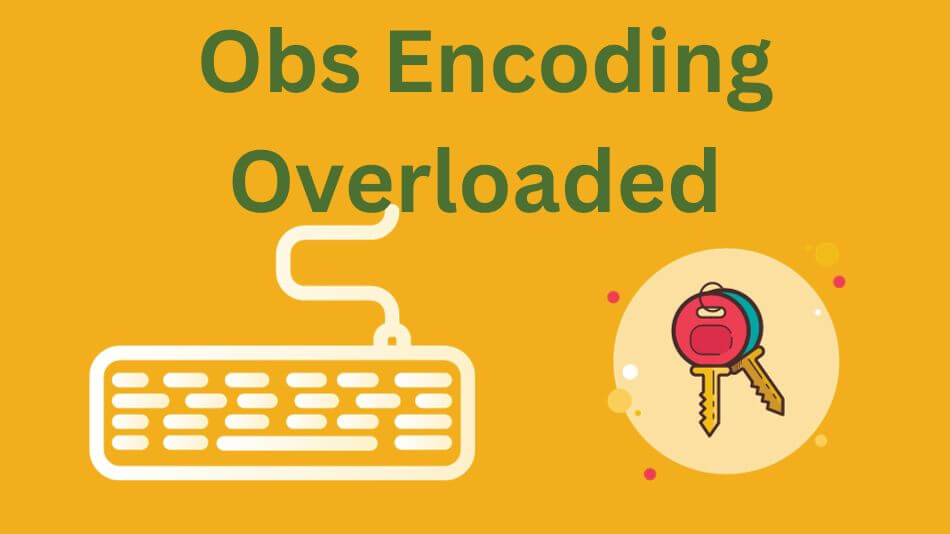Introduction

In live streaming and content creation, OBS (Open Broadcaster Software) is a popular choice for many.
However, even the most robust tools encounter their share of challenges, and one recurring issue that streamers often grapple with is “OBS encoding overloaded.”
This perplexing error can disrupt your streaming sessions and leave you scratching your head for solutions.
This comprehensive guide‘ll delve into the depths of OBS encoding overload, its causes, and most importantly, the effective strategies to overcome it.
What Is OBS Encoding Overloaded?
Before we delve into the intricate details, let’s start with the basics:
Understanding OBS Encoding Overload
OBS encoding overloaded is an error message streamers using OBS Studio may encounter. It typically occurs when your computer’s CPU (Central Processing Unit) struggles to keep up with the encoding process required for live streaming.
In simpler terms, OBS is trying to compress and send video data to your chosen streaming platform, but your computer’s processing power needs to be improved.
Causes of OBS Encoding Overloaded
Several factors can contribute to OBS encoding overload:
- Insufficient CPU Power: One of the primary culprits is an underpowered CPU. If your CPU is up to the task, it can handle the encoding workload.
- High Bitrate Settings: Overly aggressive bitrate settings can lead to overload. Lowering the bitrate may alleviate the issue.
- Too Many Sources: An overloaded OBS setup with too many sources, scenes, or browser tabs open can strain your CPU.
- Outdated Hardware: Older hardware may need to be equipped to handle the demands of high-quality encoding.
Strategies to Resolve OBS Encoding Overloaded
Now that we’ve identified the causes let’s explore practical solutions:
1. Upgrade Your Hardware
Consider upgrading to a more robust processor if your CPU is outdated or underpowered. This investment can significantly improve your streaming experience.
2. Adjust Bitrate Settings
Experiment with lower bitrate settings to reduce the encoding workload. A balance between quality and performance is crucial here.
3. Simplify Your Scene
Streamline your OBS scenes and sources. Remove unnecessary elements that strain your CPU. Keep your scenes clean and efficient.
4. Enable Hardware Encoding (if available)
Many modern GPUs (Graphics Processing Units) offer hardware encoding capabilities. Enabling this feature can offload the CPU and enhance encoding performance.
5. Monitor Task Manager
Keep an eye on your computer’s Task Manager while streaming. Identify resource-hungry applications and close them to free up CPU power.
6. Software Encoding Alternatives
Consider switching to software encoding alternatives that are less resource-intensive than OBS. Software like Streamlabs OBS and XSplit might be better suited to your hardware.
7. Optimize OBS Settings
Fine-tune your OBS settings to balance video quality and CPU usage perfectly. Adjust video output settings, resolution, and FPS to find the sweet spot for your setup.
Frequently Asked Questions

Now, let’s address some more questions that often arise regarding OBS encoding overload:
H3: Q4: Can OBS encoding overload be resolved without spending money on hardware upgrades?
Yes, you can make significant improvements without spending money by optimizing software settings and minimizing the load on your CPU.
H3: Q5: What should I do if I still encounter OBS encoding overload after trying all these solutions?
If you’ve exhausted all options and still face issues, consider contacting streaming forums or communities for personalized advice or consulting a professional for a hardware upgrade.
H3: Q6: Does OBS encoding overload affect stream quality?
Yes, encoding overload can lead to dropped frames and reduced stream quality. Resolving this issue is crucial for a smooth viewing experience for your audience.
Conclusion

In conclusion, OBS encoding overload is a common challenge many streamers face, but it’s manageable.
By understanding its causes and implementing the right strategies, you can ensure a smoother streaming experience.
There are various approaches to tackle this issue, from upgrading your hardware to optimizing your OBS settings and considering alternative software.
Remember that every streaming setup is unique, so don’t be discouraged if it takes trial and error to find the perfect solution for your situation.
With persistence, creativity, and a commitment to delivering quality content, you can overcome OBS encoding overload and continue to engage and entertain your audience without interruption.
So, equip yourself with the knowledge and tools this guide provides, and get back to doing what you do best: creating unique content for your viewers.
